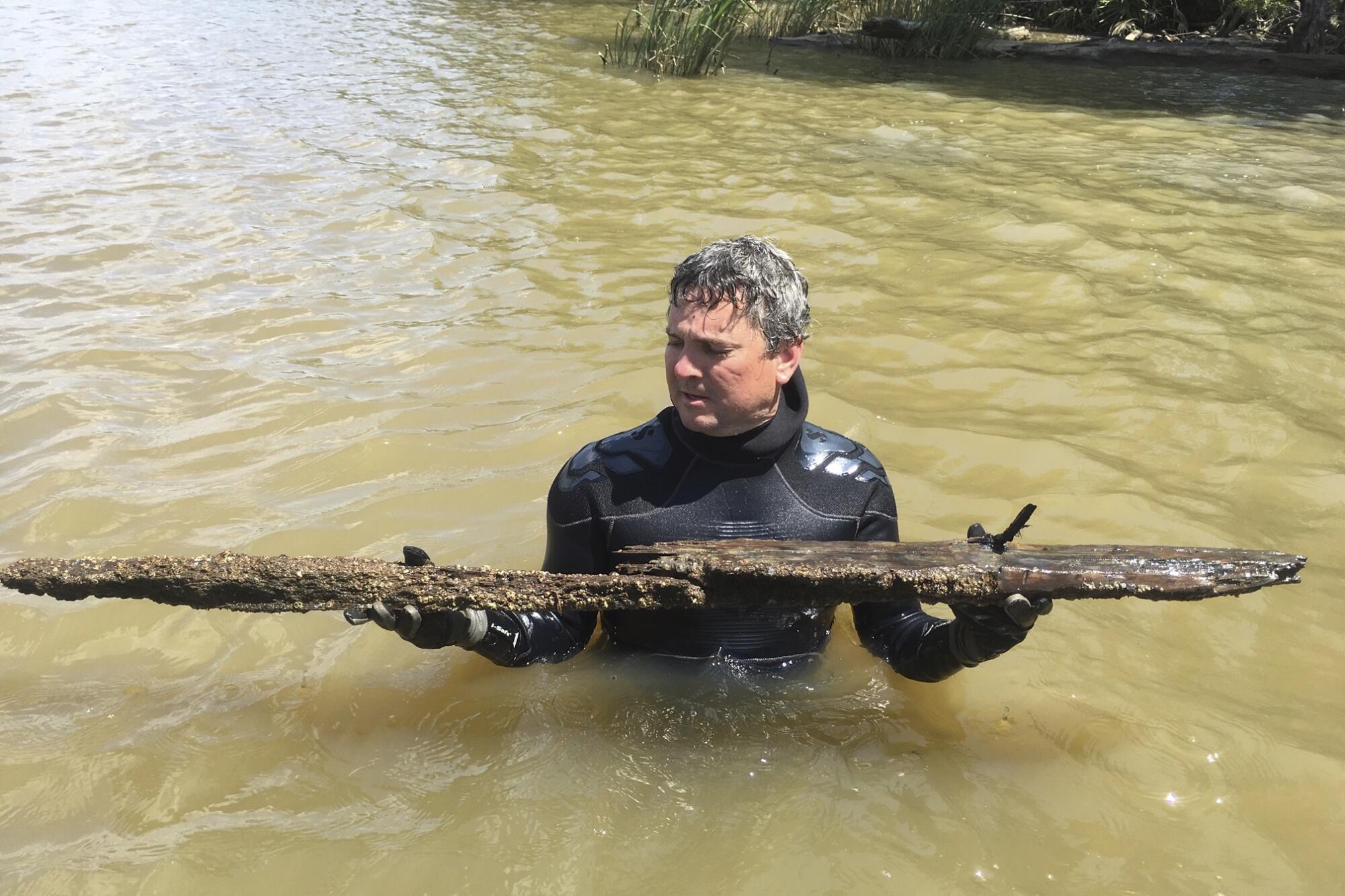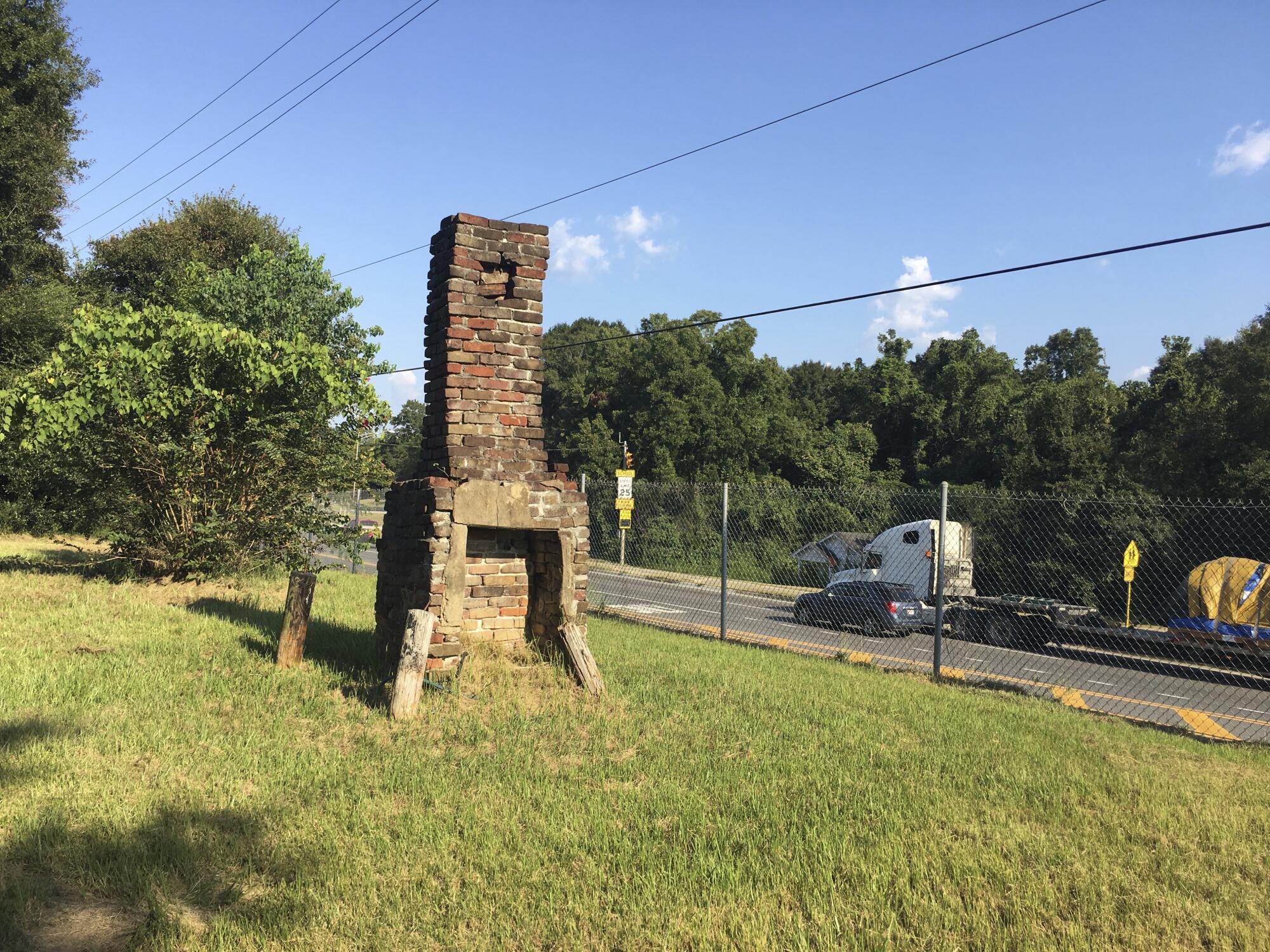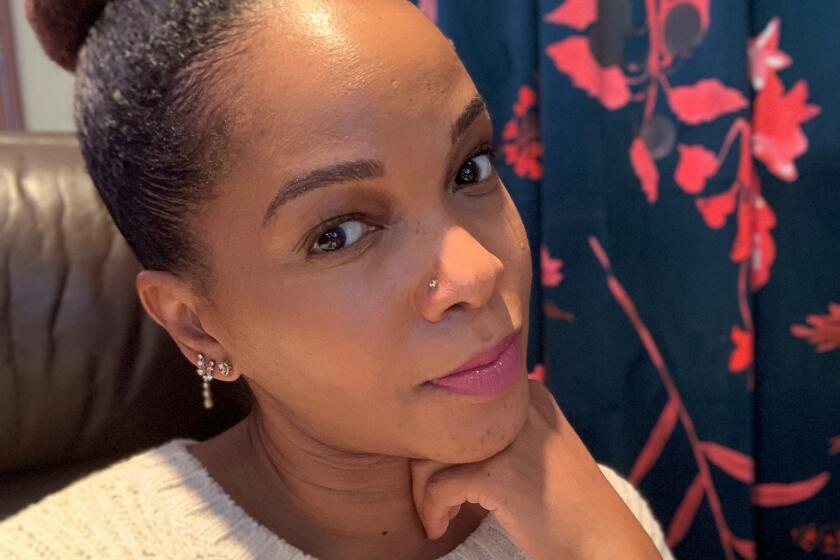
- Share via
On the Shelf
The Last Slave Ship: The True Story of How Clotilda Was Found, Her Descendants, and an Extraordinary Reckoning
By Ben Raines
Simon & Schuster: 304 pages, $28
If you buy books linked on our site, The Times may earn a commission from Bookshop.org, whose fees support independent bookstores.
In 1860, the schooner Clotilda sneaked through the waters off Mobile, Ala., and up into rivers nearby. After its crew and cargo departed, the ship was set on fire and burned, not to be seen for nearly 160 years. The reason for the arson: The cargo consisted of more than 100 Africans, and bringing new slaves into America had been illegal for nearly half a century.
The Clotilda’s owner, Timothy Meaher, financed the risky project almost as a lark, placing a bet that he could pull it off because he reveled in the idea of putting one over on the American government. Meaher succeeded, burning the evidence and benefiting from both the sale and ownership of the enslaved Africans.
Five years later, all enslaved people in the U.S. were freed. A group of Clotilda survivors banded together, eventually buying land from the Meahers and building a church, a school and a flourishing community called Africatown on the outskirts of Mobile. Over the last half-century, however, Africatown was all but ruined by systemic racism. Musician Ahmir “Questlove” Thompson is a descendant of the original group; former Major League Baseball player Cleon Jones grew up there.
Even as a backlash brews over teaching America’s racist history, ‘Forget the Alamo’ and ‘How the Word Is Passed’ tell of the full, inglorious past,
In 2019, environmental journalist Ben Raines and a local nature guide solved the mystery of the ship’s location. Raines describes the quest in a new book, “The Last Slave Ship: The True Story of How Clotilda Was Found, Her Descendants, and an Extraordinary Reckoning.” (Separately, a documentary covering similar terrain, “The Descendant,” just premiered at the Sundance Film Festival.)
Raines discussed the fate of the ship and the people linked to it with The Times in a recent video conversation. The interview has been edited for length and clarity.

Why does the Clotilda story matter?
It happened so late, and these people were all 15 to 30 years old, so they lived a long time after the Civil War and were interviewed dozens of times. We know the villages they came from [in Benin], who captured them. They provide some of the only first-hand accounts of the Middle Passage. And we know what it was like to have lost freedom — most [enslaved] people had been born into slavery — so we know the pain they felt.
The experience is a proxy for everyone whose families arrived here on a ship, the millions of them who can never know their ancestors’ stories because they weren’t recorded.
Africatown is initially an inspiring tale of communal success, but what followed is a second American tragedy.
The town’s story was one of ascendance for decades. But the city and state government used all the levers they could against the Africans. The community has been blighted in a profound way. It was intentional and systemic racism. I think it’s important to call out the people responsible as best you can.
Scott Ellsworth talks about ‘The Ground Breaking,’ a new follow-up to “Death in a Promised Land,” his pioneering 1982 exposé of atrocities in Tulsa.
Who were the main culprits?
It started in the 1920s. The Meaher family still owned the land around the community. The first factory offered good jobs to the people, but the family kept leasing to industry until it had a gathering force. The largest paper mill in the world is right here, and there’s another mill right next to it. The Meahers also destroyed 500 rental houses in the 1960s, knocking thousands of people out of the community. They did it to protest that the city of Mobile had finally given water and sewer service to Africatown. The head of the family said to a newspaper, “They don’t need water, they wouldn’t know how to use a bathtub.”
And then in 1992, the city and state built a gigantic bridge and ran a six-lane highway right through Africatown, destroying all the remaining buildings from the original settlers. Descendants were still living in those houses. The highway also cut the community in half and took away the central business district. The population is down from 12,000 to 2,000.
There are descendants of the original Africans still living there, but they’ve been robbed of the sense of community the Africans built, of their prosperity and a place where African Americans were in charge.

Mike Foster, a descendant of the man who captained the Clotilda, has come to Africatown to apologize for his family’s behavior. Yet the Meahers have refused to right any wrongs. Do you feel hope or resignation?
It fills me with hope. Mike’s just a normal guy who lives in Montana who read my article and was so moved, he wanted to apologize to the descendants. He was terrified, but he did it anyway, and he was embraced by them. No member of the Meaher family has ever spoken publicly about the Clotilda, but people have seen Mike’s example; maybe a new generation of the Meaher family will want to apologize.
The writer and Princeton scholar on “South to America,” her personal and historical tour of the region, and why so many liberals are wrong about it.
Why was finding the ship itself important?
There are great-grandkids of the Africans who are still alive. But the story of the Clotilda had become almost a myth, an urban legend. People didn’t really believe it when Africatown people would tell the story. The ship represents a way to resurrect Africatown.
In Montgomery, the Legacy Museum about lynchings has had a billion-dollar financial impact to the city. Civil rights tourism is a burgeoning industry. Imagine having the Clotilda on display in a world-class museum in Africatown. There’s a perfect place to build it. The city had once taken away houses to build a huge housing project. That became notoriously dangerous and it was razed, so there’s a 42-acre plot in the center of Africatown just screaming for this museum and a new commercial district.
How important is it to persuade Alabama to excavate the ship?
There have only been 13 slave ships found, and this is the only one that was used in the American slave trade. It’s only in 20 feet of water. It would cost $10 [million to] $20 million; Congress could appropriate the money, or there are wealthy people who would pay to do it.
Benin has asked for a piece so they can tell the story; with $50 million from the French government, the Smithsonian has designed two museums in Benin. How is it that one of the poorest nations on Earth can have that and we can’t have that in Africatown? It’s absurd. But interests in Alabama have been trying to quiet the story. The Meaher family is still prominent here. We will be doing some rabble-rousing with the descendants. They are unhappy with the state of things.
In travel writer Richard Grant’s “The Deepest South of All,” Natchez, Miss., is full of characters, stubborn racist traditions and lots of contradictions.
- Share via
Watch L.A. Times Today at 7 p.m. on Spectrum News 1 on Channel 1 or live stream on the Spectrum News App. Palos Verdes Peninsula and Orange County viewers can watch on Cox Systems on channel 99.
More to Read
Sign up for our Book Club newsletter
Get the latest news, events and more from the Los Angeles Times Book Club, and help us get L.A. reading and talking.
You may occasionally receive promotional content from the Los Angeles Times.











